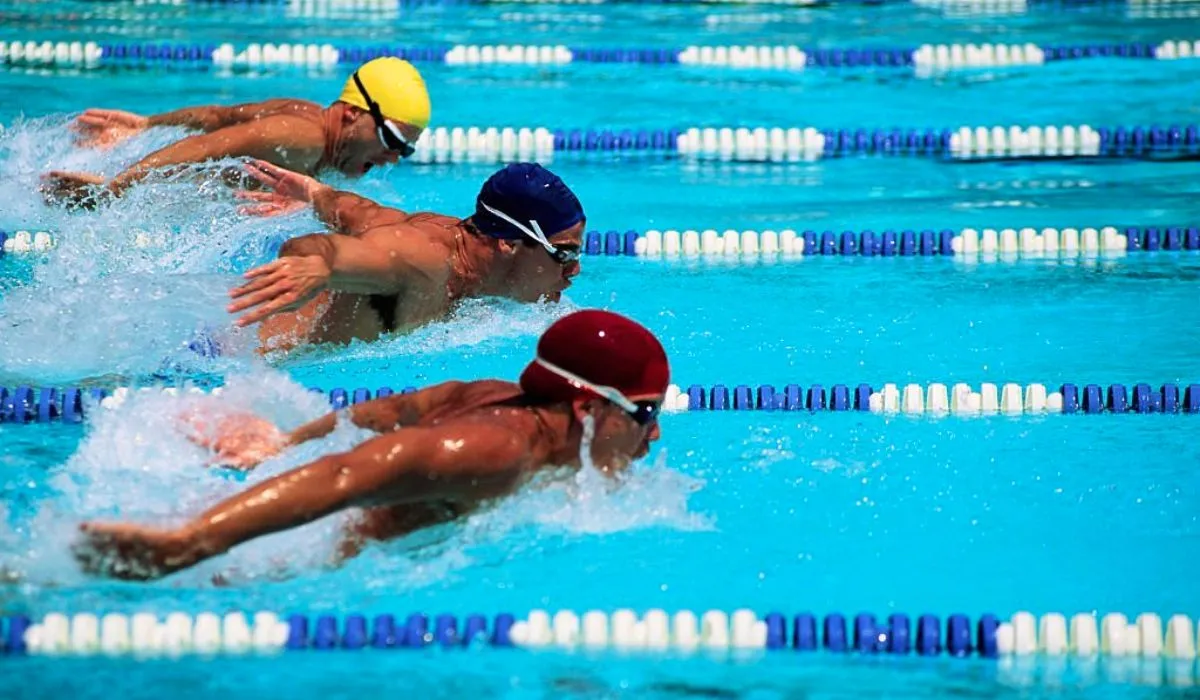Swimming is a great sport and a popular low-impact fitness activity enjoyed by all age groups. Swimming involves tremendous physical movement and strength exercises combined with cardiovascular training.
Unfortunately, these characteristics make swimming prone to injuries. The majority of swimming injuries are concentrated on the shoulder, neck, lower back, and knee regions. Thus, understanding the swimming biomechanics and typical injuries in swimming can help with the initiation of treatment and the design of rehabilitation strategies.
Through this article, I set out to explain the common swimming injuries along with tips for prevention and recovery.
Common Swimming Injuries
- Swimmer’s shoulder: This is the most frequent orthopedic injury experienced by regular swimmers. The shoulder injuries may include shoulder impingement, rotator cuff tears, biceps tendinitis, and shoulder instability. This occurs due to the inability of the structures that surround the shoulder to maintain the ball within its socket or when the shoulder muscle tissue and tendons tear or become inflamed due to the repetitive rotation of the shoulder joints. People with this condition feel pain along the front and back of their shoulders.
- Swimmer’s ear: This is not an orthopedic injury, but it can cause significant pain and discomfort in swimmers. When the water remains in the ear or the ear canal of the swimmers, it can cause a bacterial or fungal infection known as swimmer’s ear. Itchiness, swelling, and redness around the outer skin or ear canal, pain around or in the ear, and discharge of pus are the major symptoms of swimmer’s ear.
- Swimmer’s knee: Even though breaststrokes are considered a relatively relaxed and comfortable stroke compared to others, they can cause a condition called swimmer’s knee. That is, the leg movements during the breaststrokes could potentially build stress on the inner side of the knee. This develops from the repetitive and powerful kicking motions of the stroke. Such practices can also strain the knee ligaments, resulting in pain and inflammation. The typical symptoms may include reduced flexibility of the knee, instability in the upper leg and knees, and numbness of the thigh muscles.
- Neck injuries: A swimmer’s neck is prone to significant stress from high-intensity training. But most neck injuries occur when the swimmers contort their neck while keeping their heads above the water in order to breathe, specifically in freestyle strokes or breaststrokes.
- Lower back pain: The spine is another recognized site predisposed to injuries in elite swimmers, especially those who practice butterfly and breaststrokes. These strokes put a strain on the lower back and lead to tightness and muscle imbalances in the lower back.
Also Check: 10 Most Common Orthopedic Sports Injuries: Identify Each One Of Them
Tips For Prevention And Recovery
🔸 Swimmer’s Shoulder
Prevention: The first step to preventing this condition is to ensure that your stroke and techniques are performed properly. You can improve shoulder stability by performing strengthening exercises. Also, pay attention to the way that your hands enter the water. Getting proper rest when the shoulder joints are overused or tired is also essential to prevent it from happening.
Recovery: It is often advised to apply a warm compress to the affected area to increase blood circulation. Avoiding unnecessary strain, limiting training, and refraining from sudden high-intensity training are also important. Anti-inflammatory medications and physiotherapy can also help you recover.
🔸 Swimmer’s Ear
Prevention: Avoid swimming in unhygienic pools or water bodies, and keeping your ears clean and dry can prevent the swimmer’s ear.
Recovery: If the condition becomes severe, doctors will prescribe medicated drops to lessen the pain and infection. In some cases, doctors may restrain you from swimming until the infection is cured.
🔸 Swimmer’s Knee
Prevention: Preventive measures include correcting swimming techniques, making changes in the swimming routine by practicing other strokes, and improving your strength by working out or strength training.
Recovery: The most important measure to ensure fast recovery is to refrain from swimming and give the body time to rest. Stretching, strengthening, and conditioning exercises can improve the symptoms.
🔸 Neck Injuries
Prevention: The first and foremost measure to prevent neck injuries is to keep your head aligned with the spine while swimming. And instead of twisting your neck to breathe, experts recommend rotating your entire body or using alternate sides.
Recovery: In cases of severe neck injuries, doctors may advise the use of neck braces. Getting enough rest and practicing cross-training and neck-strengthening exercises are also beneficial for recovery.
🔸 Lower Back Pain
Prevention: Maintaining proper posture and swimming techniques are necessary to prevent lower back pain.
Recovery: Pool therapy is ideal for dealing with lower back pain in swimmers. Additionally, core and strengthening exercises could also help in lessening the pain.
Read More: Physical Therapy For Marathon Runners: Is It Beneficial For Your Performance?
Conclusion
Although swimming can lead to injuries, do not let this fact stop you from loving or doing it. For this reason, keep yourselves aware of potential injuries and preventive measures. It is recommended to incorporate warm-up exercises, strengthening, and conditioning programs to recover from the injuries. At the same time, it is also important to avoid overtraining and allow the body proper rest time for fast recovery.
